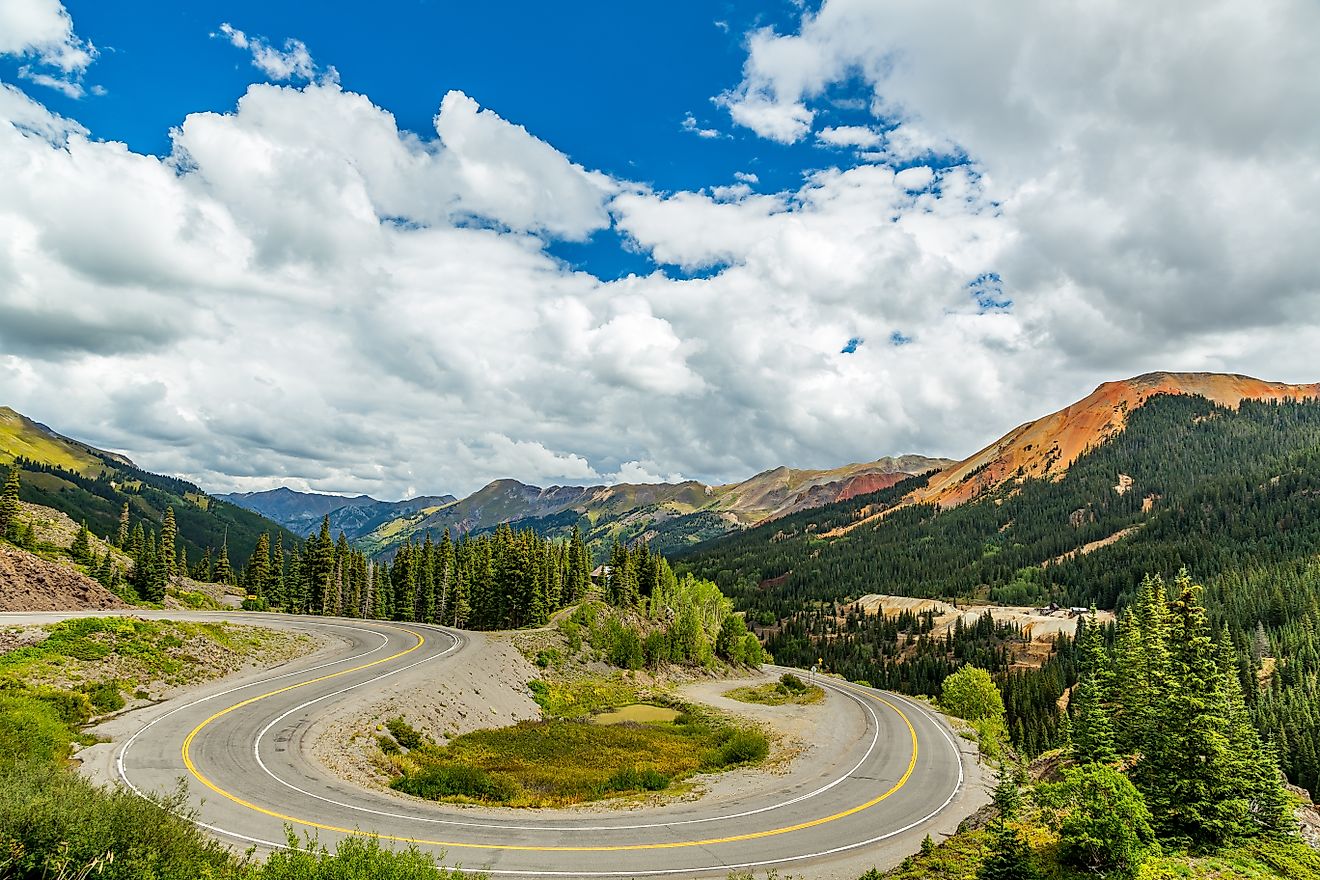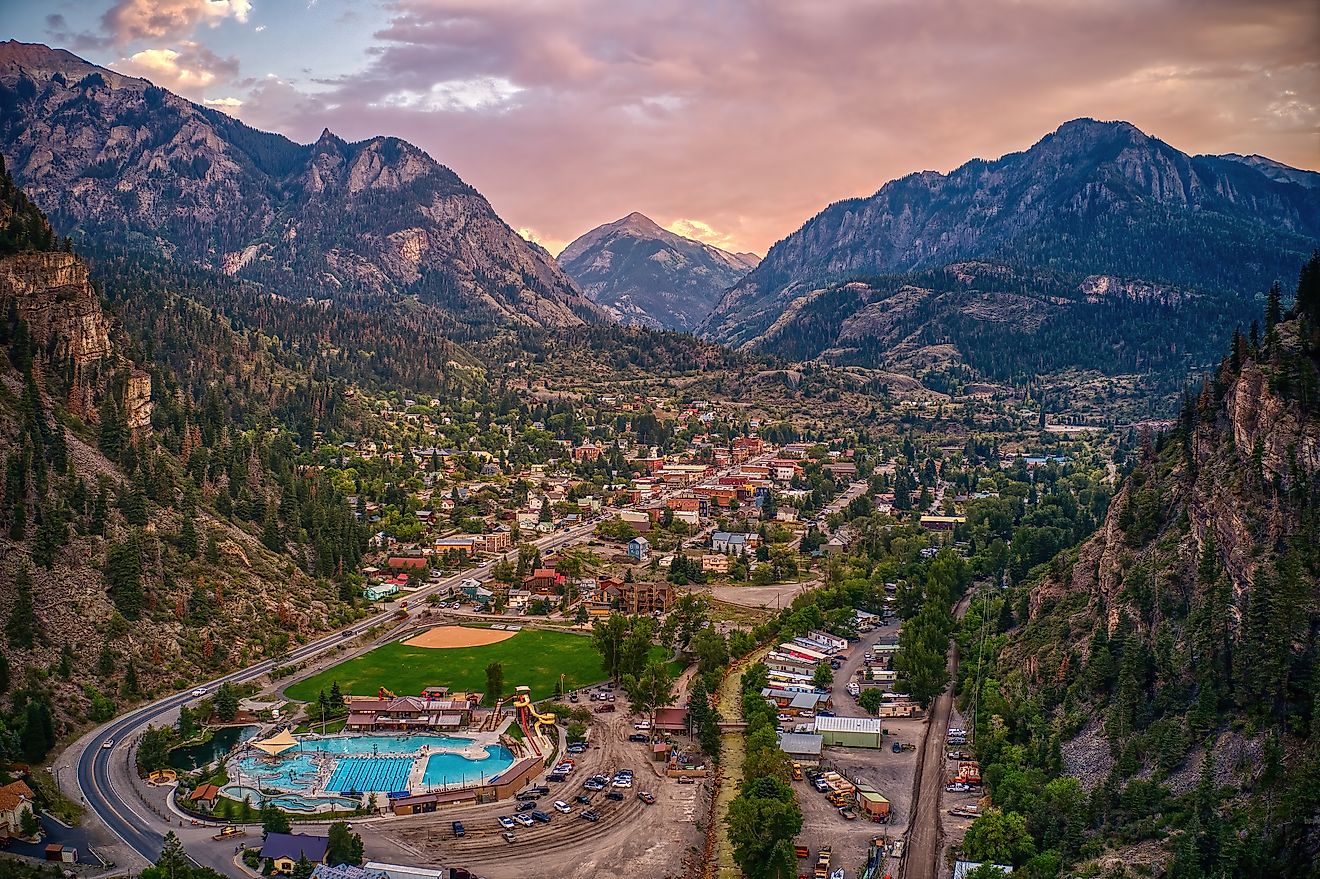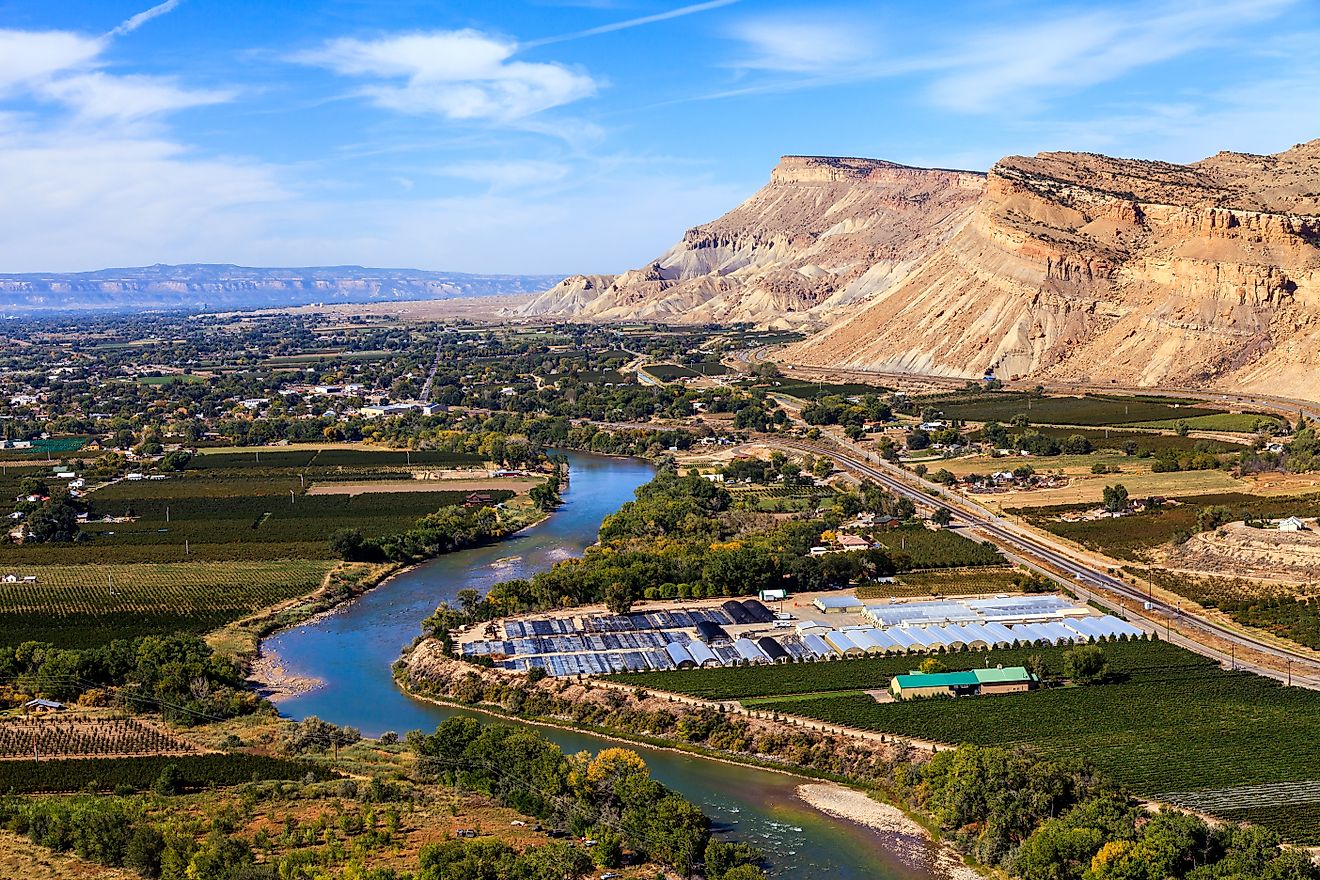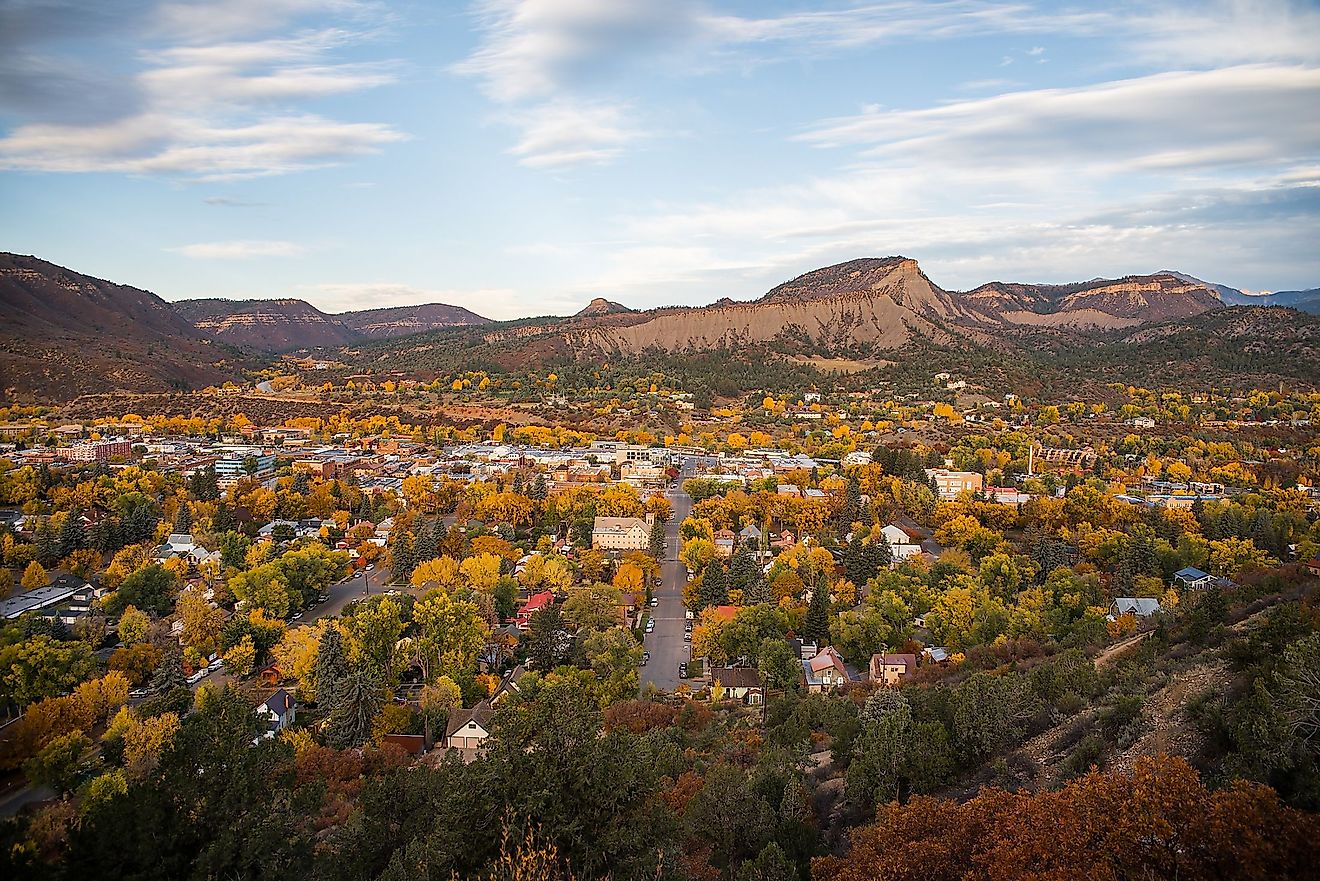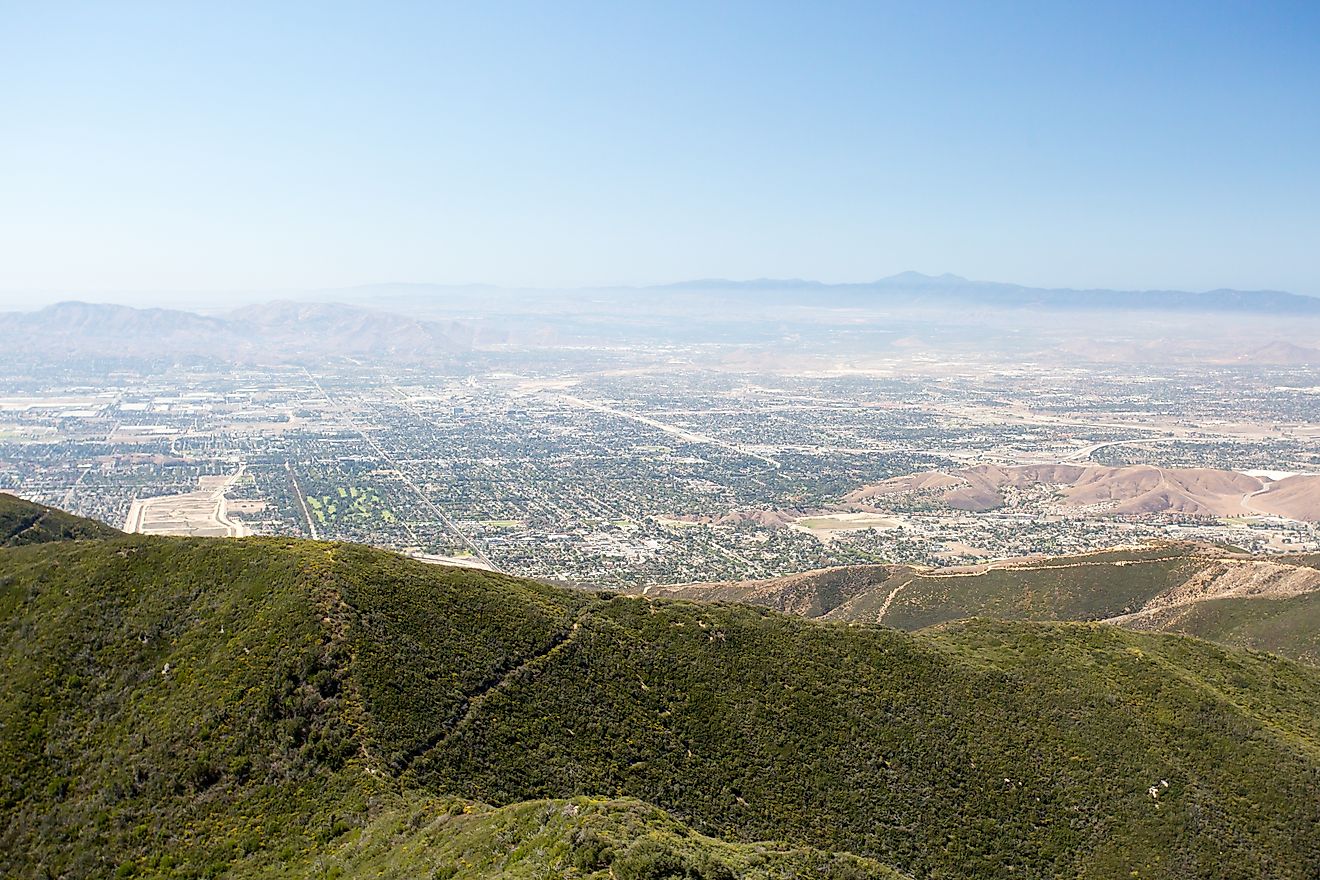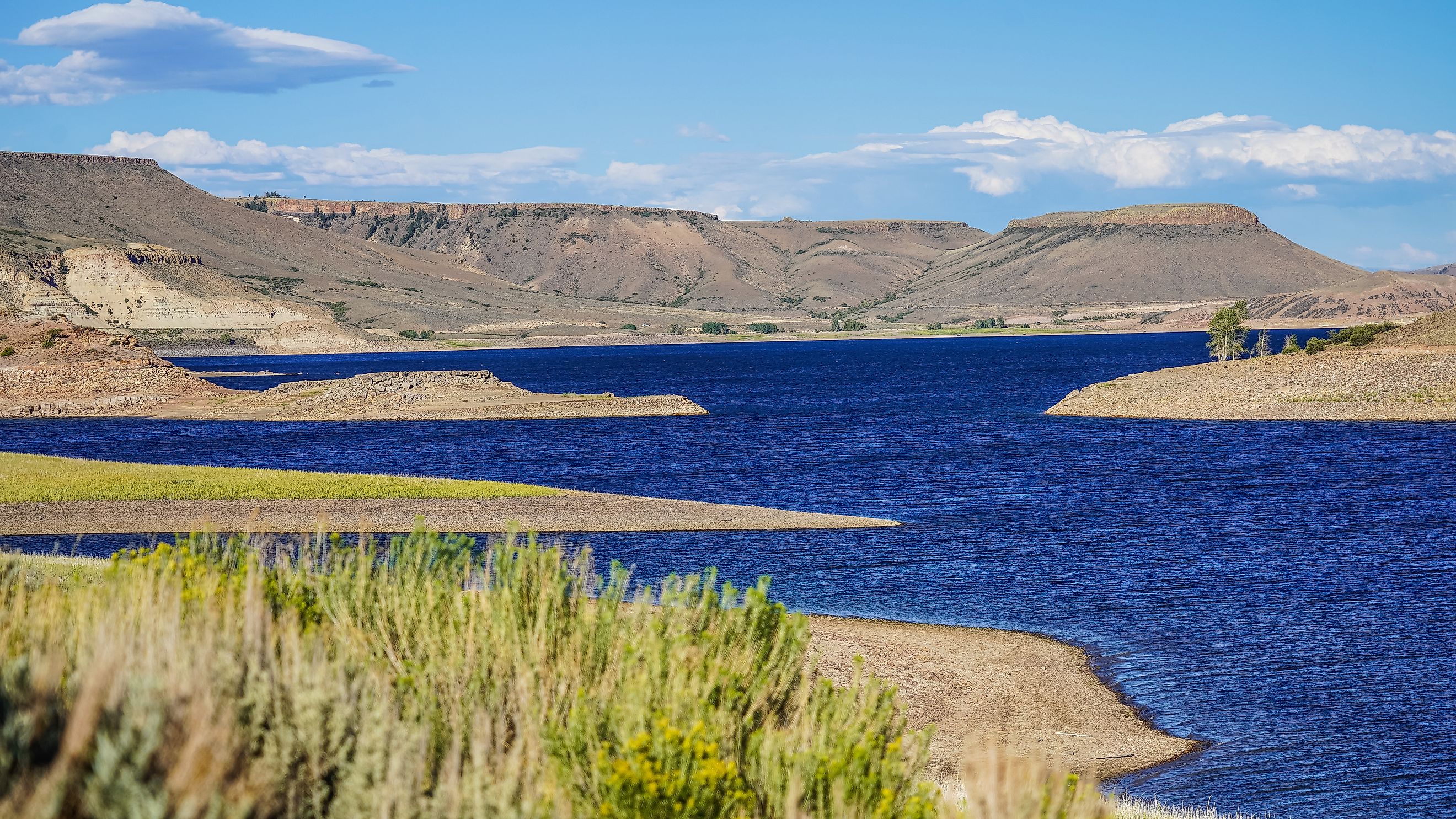
The 8 Largest Lakes in Colorado
From the highest mountain peak to the bottom of the deepest lake, natural beauty abounds in Colorado. And speaking of deep lakes, the Centennial State is home to some seriously big bodies of water. From man-made reservoirs surrounded by dense green forests to chilly lakes that are responsible for providing nearby communities with usable water, you’ll find it all right here in Colorado. So, whether you’re looking for a pristine place to swim or simply want to enjoy blue water views as far as the eye can see, Colorado's largest lakes have you covered.
Navajo Reservoir
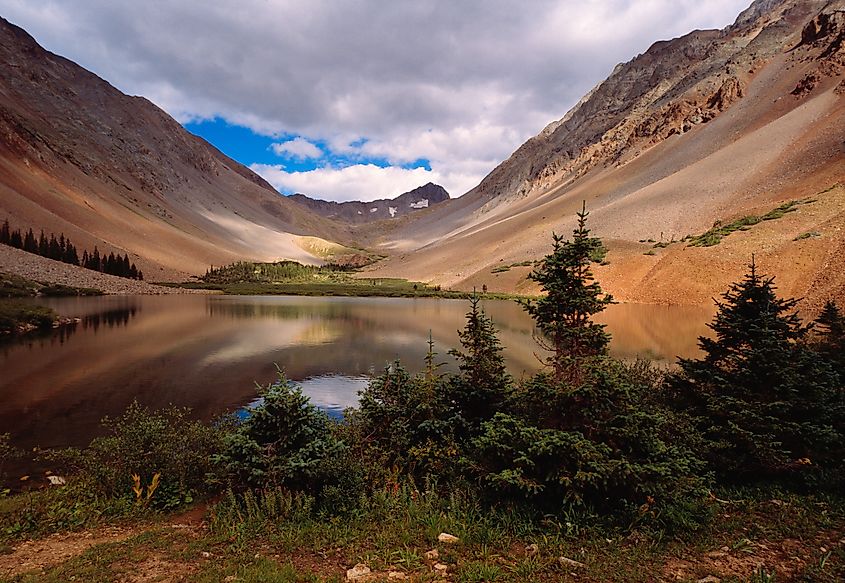
Navajo Lake, Colorado State Park, Colorado.
Boasted as “Colorado's answer to Lake Powell,” the Navajo Reservoir was originally constructed as part of the Colorado River Storage Project, but serves as a hotspot for many recreational activities as well. When at full capacity, the reservoir has a surface area of 15,600 acres and a maximum depth of nearly 400 feet, making it the largest lake in Colorado. The sizable body of water–which stretches well into New Mexico–is home to a variety of cold and warm-water fish. For the cold-water population, expect to see a variety of trout and salmon while the warm-water fish include largemouth bass, crappie, bluegill, and channel catfish.
John Martin Reservoir

Coming in with a surface area of 11,658 acres, the John Martin Reservoir is certainly a sprawling body of water. That said, the reservoir has an average depth of just 5 to 10 feet making it one of the most shallow lakes on this list. At its deepest point, the lake plunges down some 60 feet and offers ideal conditions for a range of fish including walleye, saugeye, bass, wiper, crappie, perch, and catfish. Located within John Martin Reservoir State Park, this impressive lake is surrounded by desert prairies and beautiful rocky bluffs which make perfect conditions for birdwatching. Speaking of birds, the reservoir is also a popular stop for migrating snow geese during the winter months.
Blue Mesa Reservoir

Blue Mesa Reservoir on Gunnison River, Colorado.
Although slightly smaller than the Navajo and John Martin Reservoirs, the Blue Mesa Reservoir, located inside of the Curecanti National Recreation Area, is still quite the sight to take in. The lake spans a surface area of 9,180 acres and reaches 300 feet at its deepest point. Equally impressive are the mountains that paint a stunning backdrop for the lake. From the shorelines, you can see unbeatable views of Pearson Point Summit. Additionally, water from the reservoir flows seamlessly into the Gunnison River, eventually making its way into the picturesque Black Canyon of the Gunnison National Park. The lake’s ecosystem is home to many of the same trout and salmon species found in the Navajo Reservoir. Additionally, you can find yellow perch, sculpin, dace, and sticklebacks in the water.
Lake Granby

Beautiful Autumn Sunset on Granby Lake in the Colorado Rocky Mountains.
Lake Granby, created by a dam in 1950, spans 7,260 acres and reaches a maximum depth of 221 feet. Nestled among stunning mountain peaks and tree-covered hills, it offers over 150 miles of picturesque shoreline. This lake is renowned for having the highest population of lake trout in Colorado, thanks in part to its thriving Mysis shrimp population and diverse benthic habitat. The surrounding natural beauty, including nearby parks and forests, makes Lake Granby a perfect destination for outdoor enthusiasts and anglers. Whether you're fishing or enjoying the views, this serene location is a true gem in the Rockies.
McPhee Reservoir
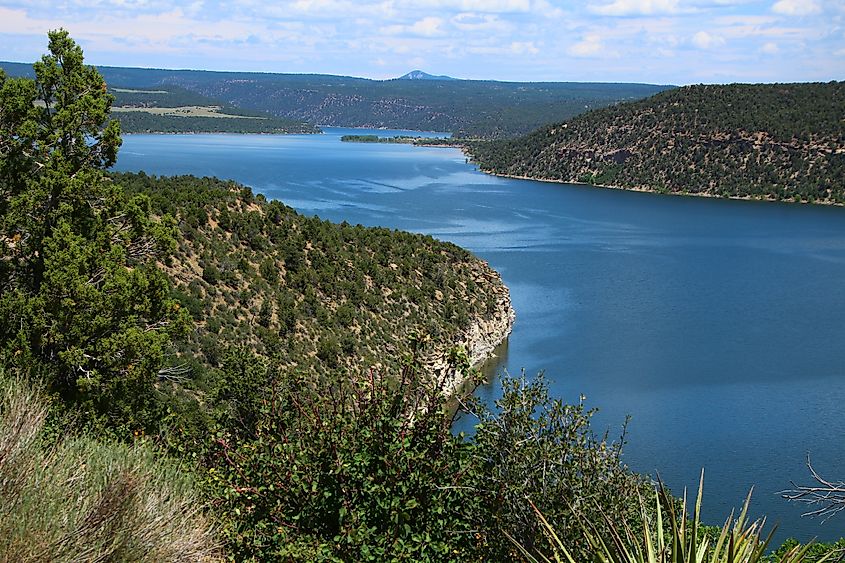
McPhee Reservoir; Dolores, CO.
Tucked inside the beautiful San Juan National Forest, the McPhee Reservoir is a sparkling body of water surrounded by greenery and distant peaks from the San Juan Mountains. With a surface area of 4,470 acres and a maximum depth of 270 feet, the McPhee Reservoir is the largest lake inside of the forest and among the largest in the state. Home to a mix of warm and cold water fish, you can expect to find walleye, smallmouth bass, largemouth bass, rainbow trout, crappie, northern pike, perch, and kokanee salmon swimming in the McPhee waters.
Lake Pueblo

Pueblo Lake Colorado.
Lake Pueblo is a man-made reservoir located inside of Lake Pueblo State Park. Often referred to as Pueblo Reservoir, the lake boasts a surface area of 4,600 acres and reaches 135 feet at its deepest point. Lake Pueblo’s warm waters make it an ideal destination for a wide range of recreational water activities–attracting a whopping 1.7 million visitors each year. That same warm water creates the ideal living conditions for an array of fish including smallmouth bass, largemouth bass, spotted bass, walleye, crappie, bluegill, wiper, channel catfish, flathead catfish, blue catfish, rainbow trout, common carp, gizzard shad, and white suckers.
Dillon Reservoir
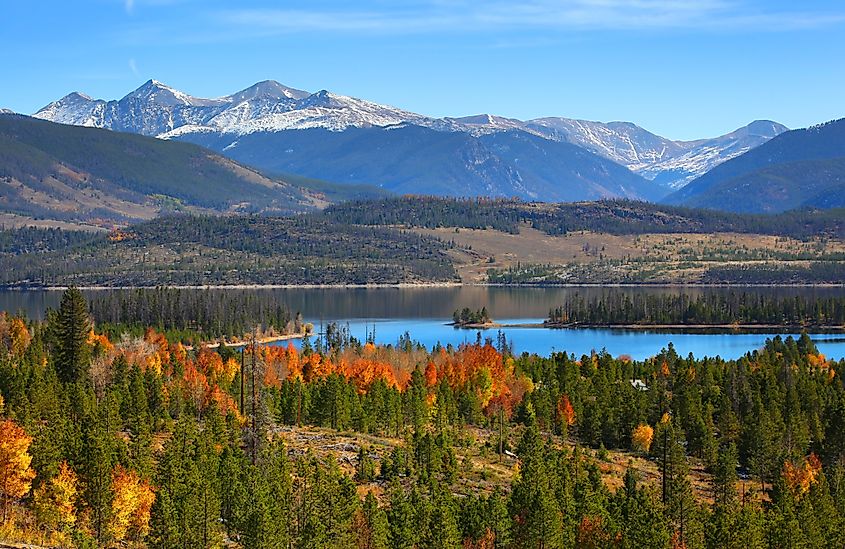
Beautiful Dillon reservoir landscape in Colorado in Autumn time.
Owned and operated by the city of Denver, the Dillon Reservoir has a surface area that stretches 3,233 acres and a maximum depth of roughly 79 feet. Surrounding the lake, travelers will find several popular mountains and skiing destinations including Copper Mountain, the Keystone Resort, the Arapahoe Basin, and Breckenridge Ski Resort. From the shoreline, views of the picturesque Tenmile Peak are also available. Although the cold lake water is unsuitable for things like swimming and other water-contact activities, it serves as the perfect habitat for cold water fish including brown trout, rainbow trout, kokanee salmon, and arctic char.
Horsetooth Reservoir

Winter landscape of Horsetooth Reservoir at foothills of northern Colorado.
Located in the peaceful foothills of Larimer County, Colorado, Horsetooth Reservoir is a sizable lake offering breathtaking views of the surrounding Horsetooth Mountain. The lake, which has a surface area of 1,900 acres, is primarily used to provide supplemental water for municipal use to several nearby communities. Horsetooth Reservoir has a maximum depth of 200 feet and is surrounded by 1,900 acres of public lands where hiking, rock climbing, camping, and horseback riding can be enjoyed. In the water, travelers can expect to find an ecosystem quite similar to many other lakes on this list. Some examples of fish that call Horsetooth home include smallmouth bass, walleye, trout, splake, white bass, crappie, bluegill, and perch.
In Conclusion
When you picture Colorado, those stunning snow-capped mountains probably steal the spotlight. However, this beautiful state is also dotted with breathtaking lakes that deserve your attention. From serving as vital water sources to offering amazing recreational activities, Colorado's largest lakes are not only picturesque but also packed with fun. Whether you’re fishing, boating, or simply soaking in the views, these lakes provide a perfect complement to the majestic mountain scenery. So, next time you're exploring Colorado, don’t forget to include its sparkling lakes in your adventure—they're a hidden gem just waiting to be discovered!
